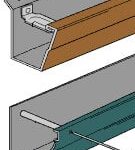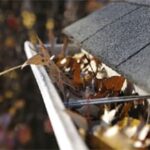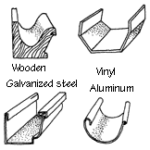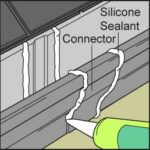Gutter leaf guards, screens, and filters help prevent clogged, overflowing gutters. This expert buying guide will help you choose the right gutter guards, offering pros and cons of gutter guard types.
Rain gutters should be kept free of leaves and other debris. Otherwise, water will back up at the downspouts, filling them up. When this happens, the weight can dislodge or bend the gutters and—worse—the water will spill down the house, potentially damaging windows, doors, siding, and the foundation.
You should inspect and clean gutters and downspouts at least twice a year to make sure they’re not clogged with leaves and debris. To have your gutters cleaned out professionally, expect to pay about $95 to $125 for a single-story, 2,500-square-foot house and more for a two-story or larger house.
A popular remedy for periodic gutter cleaning is to install some type of gutter protection or leaf-catching system. Here we take a close look at some of the many available products, ranging from very inexpensive wire screening to extremely pricey enclosed gutter-control systems.
If a particular gutter guard company is pitching you on its product, before you sign up for professional installation, the best way to check it out is to request the names and phone numbers of satisfied customers and give them a call.
Types of Gutter Guards
Most gutter guard systems can be grouped into these basic categories:
• Various types of screens that filter the debris from the water, from expensive micro-mesh screen systems to super-cheap screen panels.
• Solid gutter covers that deflect leaves and debris while capturing rain runoff
• Gutter inserts made of foam or brushes that prevent leaves and debris from clogging the gutters but allow water to drain through the channels.
Within each of these categories, many different manufacturers tout the benefits of their products.
In selecting the best gutter guard for your home, you will be faced with some major decisions, beginning with budget. You can spend as little as $.30 per lineal foot for simple screening that you install yourself and as much as $30 per foot for professionally installed, solid gutter covers.
As a rule, fine-mesh screening and solid covers requiring professional installation will run from $20 to $30 per foot.
Depending upon the product, gutter guards will have varying degrees of effectiveness. Some are foolproof at blocking debris but may allow considerable rainwater to spill over the eaves, for example.
Some reject most but not all leaves and debris, so they need to be cleaned occasionally. Depending upon their design, this can become a bigger hassle than cleaning gutters with no covers if the guards can’t be removed easily, for example.
Some gutter guards work great beneath broad-leaf trees but marginally at rejecting needles or seeds. Others are good for low-sloped roofs but allow too much spillover on a steeply pitched or metal roof. Still others encourage massive icicles in snowy, freezing weather.
Unless you’re going to opt for the least expensive, easiest-to-install options such as simple screens available at home improvement centers, it’s wise to check with neighbors who are happy with their gutter control systems, especially if their homes have a similar architecture and roof pitch to yours.
Fine-Mesh Gutter Guards & Screens
Fine-mesh gutter guards (also called “micro-mesh” gutter filters or screens) are placed across the tops of gutters to keep gutters clear. They employ sieve-like mesh panels or screens to separate leaves and roof debris from rainwater.
These gutter guards are much more effective than the common screen gutter guards available at home improvement centers. Their mesh is super-fine—typically 50 microns, which is small enough to capture sand. Because of this, these systems are popular for both conventional gutter guards and rainwater recovery systems that collect rainwater for landscape watering.
Compared to other gutter-guard technologies, fine-mesh gutter screens perform very high—no pun intended. They reject nearly all roof debris while also capturing most of the water.
Although fine-mesh gutter guards are much more expensive than standard gutter screens, gutter brush inserts, and gutter foam inserts, they are comparably or lower priced than solid-top gutter guards and have long (if not lifetime) guarantees. For more about these types of gutter products, see Gutter Guards & Leaf Catchers.
If you have a micro-mesh gutter guard installed on either a very old asphalt roof or a brand-new asphalt roof, be advised that the super-fine mesh can be clogged by roof tar that leaches out of these materials. Mossy or moldy roofs can also clog the mesh. Ask your fine-mesh gutter screen provider about what cleaning might be necessary if this happens.
Three popular companies that make fine-mesh gutter guards are MasterShield, Gutterglove, and LeafFilter. Here is a closer look at each:
MasterShield
MasterShield manufactures a patented stainless-steel micro-mesh gutter screen with a strong ribbed design that protects the mesh from sagging and helps capture most of the rainwater cascading down a roof. The mesh rejects all debris larger than 50 microns.
One of the highest-performing designs available, MasterShield is a sophisticated gutter guard that requires professional installation. In many cases, the existing gutters must be lowered slightly to ensure the proper angle for the gutter guard. Mastershield guarantees that gutters will never clog.
The approximate price per linear foot is not available; installation costs fluctuate dramatically depending upon the roof’s construction, location, and the complexity of the job. That said, don’t be surprised if this product costs about $20 per lineal foot. Contact a MasterGuard distributor or installer to get a bid.
Gutterglove
Gutterglove, another micro-mesh gutter screen system, has an anodized aluminum frame. The frame is made of U-shaped channels that won’t collapse or allow the mesh to droop. The Gutterglove system is designed to tuck up under existing shingles and lip over the edge of existing gutters.
The company makes three models: Gutterglove Pro, Gutterglove Ultra, and Gutterglove IceBreaker, which has a channel that receives an integrated heating cable to minimize ice dams and icicles. A fourth product, LeafBlaster, is a simpler and less expensive product that doesn’t have the same aluminum support frame.
Though Gutterglove can be installed by a handy do-it-yourselfer, it is typically installed by a professional. For materials only, expect to pay about $9 per lineal foot; with installation, it will run closer to $20 per foot. Gutterglove comes with a lifetime guarantee.
LeafFilter
LeafFilter is a top-rated patented gutter-guard system that employs a stainless-steel mesh stretched across the top of a perforated PVC body. It can be installed on either existing or new gutters.
LeafFilter, along with its other fine-mesh competitors, is among the best-performing gutter guard technologies on the market. It does an exceptional job of filtering out roof debris while capturing rainwater. Gutters are guaranteed never to clog.
This product is not designed for do-it-yourself installation; it is sold and installed by local LeafFilter dealers. Expect to pay about $20 per lineal foot.
Solid-Top Gutter Guards
Reverse-curve solid-top gutter covers are at the high end of the gutter guard scale. Are they worth it?
Gutter guards and covers are designed to minimize or eliminate the need for regularly cleaning and maintaining gutters. Many different types of gutter guards are made. Here we look at a relatively sophisticated group: solid-top reverse-curve gutter covers. (For more about other types of gutter guards, see Gutter Guards & Leaf Catchers.)
This type of gutter system typically has a solid cover that tucks up under the shingles along its top edge and clips or fastens to the gutter’s outer lip along its lower edge. Most have a “reverse curve” nosing that rolls back into the gutter.
When water pours down the roof, it crosses the top of the cover, clings to the nosing through “surface adhesion” or “surface tension,” and then flows into the gutter. Water may enter the gutter through a long slot or perforations under the nosing. Leaves and debris float across the surface but separate from the flow at the slot or perforations and fall to the ground.
As a group, solid gutter covers are quite effective—and very pricey.
When comparing brands, you’ll find that manufacturers hype their own benefits but avoid mentioning issues that potential customers might not be aware of. Though the various available brands are similar in appearance and design, they can vary dramatically in several ways.
Here, we tell you what any gutter guard should do:
- Keep debris out of the gutters
- Capture and control rainwater at the roof
- Be affordable to install and without compromising the roof
- Be easy to maintain
- Be a good investment
If a gutter guard doesn’t do all of these, it may not be a smart choice.
Following is a closer look at how solid-top gutter guards perform at some of these issues.
Keeping Debris Out of Gutters
With the majority of solid-top gutter-cover designs, a small amount of leaves and debris may be carried by the water back into the gutter. This may or may not be a problem, depending up the size of the debris that makes it into the gutter and how easily the gutters and downspouts flush the debris out during a heavy rain.
Some products have troughs with perforations that let in some of the water and filter out debris. Types with more perforations in the top surface may let in more debris than ones that have perforations on the vertical front edge, such as the Waterloov product. And, of course, the size of the perforations will determine the size of the debris that can enter the gutter.
Controlling Rain Runoff
Theoretically, a solid, completely sealed gutter cover would never fill up with leaves and debris—but it would be useless because water would just pass over the top as if there were no gutter at all. A gutter with a solid cover has a special challenge: capturing water while filtering debris.
How effectively a gutter guard captures rainwater (and filters debris) is a result of its design, from the radius of the nosing to the size of the slots or perforations that admit water. Its performance is affected not just by the weather conditions but also by the roof’s material and slope. Most solid-top gutter covers are great at rejecting leaves but marginal at preventing runoff overshoot in a major downpour.
Metal roofs or steeply pitched roofs don’t always work well with solid, surface-adhesion gutter guards, particularly during heavy rains, because the water can spill down the roof too quickly and overshoot the gutters. Where roof valleys meet gutters, overshooting water can be a big problem, so most systems employ a special barrier/collector at those spots.
These gutter covers can also be seriously problematic when it comes to snow and ice. Solid leaf guards are infamous for producing massive icicles. And snow buildup along roof edges can break away from the aluminum covers when the weather warms. If you live in a region where this may be a problem, be sure to investigate how the particular system you’re considering performs in snowy conditions.
Gutter Guard Affordability
Most solid-top gutter guards are pricey—typically from $20 to $30 per lineal foot when professionally installed—and most require professional gutter guard installation.
When considering a particular type of gutter guard, ask the salesperson for the names and phone numbers of satisfied customers who have roofs and conditions similar to yours. This type of reference is important because a particular gutter guard may not perform the same on differing types of roofs or in differing climates or conditions (many overhanging trees vs. no trees, for example). Then make a couple of calls to the references to discuss whether or not they are happy with the product and if they have any concerns.
Gutter Brushes & Foam Gutter Guards
These leaf-blocking gutter inserts are inexpensive, easy to install for DIY homeowners, and guaranteed for years.
Among the least expensive and easy-to-handle gutter-protection systems are leaf-blocking inserts made of brushes or foam. They fit right inside gutters to prevent leaves and debris from clogging the troughs while allowing water to drain. Here’s a closer look at them.
Gutter Brushes
You have to love the ingenious simplicity of this gutter system. It is made like a huge bottlebrush—stiff polypropylene bristles are twisted into a sturdy wire core. You just stuff the cylindrical brushes into your clean gutters.
The bristles of brush gutter guards allow water to flow into the troughs but block buildup of leaves and debris, which either pass over the roof’s edges or settle into the bristles. Even when debris catches in the bristles, it only marginally inhibits the flow of water in the trough.
GutterBrush is by far the easiest gutter guard system to install that we’ve found. If you can work safely along your roof’s eaves, you can install these lightweight, easy-to-handle pieces yourself. Other than a ladder, no tools are required. Otherwise, you can hire a handyman or handywoman to do the work.
Sizes are made for both 5-inch standard gutters and 6-inch oversized gutters.
Additional pluses: GutterBrush doesn’t add much weight to your gutter system, keeps birds and rodents out of the troughs, and does not require any screws or fasteners that might otherwise compromise the roof. And, unlike some other gutter guards, this system tends to discourage runoff to overshoot the gutters during a heavy rain.
GutterBrush is also one of the least expensive leaf-catching systems. Expect to pay from $3.25 to $4.25 per foot.
This means you may be able to fit your entire house for about $400.
When you compare this to the $2,000 or more that more sophisticated systems cost, you may find that the pluses outweigh the minuses. And the brushes are very lightweight so you can have them shipped to you at not much cost.
In addition, Gutterbrush is very durable. The polypropylene bristles are treated with UV protection so they stand up to sun exposure, and the twisted center wire is galvanized steel that resists rust. Gutterbrush has a one-year guarantee and a 25-year warranty against defects.
What are the minuses? First, because the brushes fit inside the gutter, they could restrict water flow, particularly when they have collected considerable debris.
Because of this, the GutterBrush system may require more maintenance than systems designed to completely filter out all debris.
And, while the system reduces the frequency of gutter cleaning needed, you still have to lift the brushes out of the gutters and shake out debris. According to the manufacturer, most leaves and debris will either blow away in a heavy wind or eventually decompose and be washed away.
Whether or not this will actually happen with your system will depend on the specific conditions of your roof and climate and the type of debris the gutters receive.
Flo-Free Leaf Guard
The nylon gutter guard made by Flo-Free Leaf Guard is a 3-foot-long, flat, 3/4-inch-thick industrial-strength woven nylon mat (with a consistency similar to a smooth-surface dish-scrubbing pad) that is sized to tuck into either existing or new seamless gutters. Because the Flo-Free Leaf Guard fits entirely in the gutter, it doesn’t compromise the roof system with fasteners. It also allows the full mouth of the gutter to collect water.
Three sizes are made: for conventional 5-inch gutters, oversized 6-inch gutters, and round gutters. Because the guards fit inside the gutter, they are usually out of view. This type of leaf guard is especially effective at repelling pine needles and preventing winter snow and ice build up.
Though some roof debris may catch on the guards, most is blown away by heavy winds or decomposes over time. Depending upon the conditions of your roof, it may be necessary to brush off the surfaces occasionally.
The nylon is treated with a UV protection. A lifetime warranty guarantees replacement of the material due to failure but does not cover damage caused by “acts of God,” which may leave you holding the bag if they’re damaged by severe weather.
This material is sold through authorized dealers only.
Leaf Defier Gutter Filter
This polyurethane foam gutter insert is made in 4-foot-long half-round and K-style (triangular profile) sections for both 5-inch and 6-inch gutters. To install this foam gutter guard, you don’t need any hardware or tools, though you’ll want a miter box for cutting lengths. The filter just slides in place under the gutter’s brackets, or, if there are no brackets, they’re held in place with a bead of caulk along the back side.
The retail price for the material runs about $17 per 4-foot section for 5-inch gutters and $25 per 4-foot section for 6-inch gutters ($4.25 and $6.25 per lineal foot, respectively).
The foam material has been treated for protection from sun and severe weathering so that it won’t break down over time. It has a 25-year warranty for both manufacture quality and performance; however, this warranty begins declining in value after the first two years. After 20 years, only 10 percent of the purchase price is refundable.



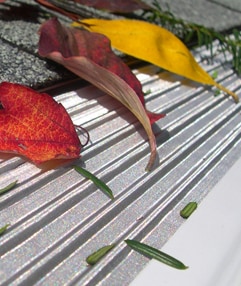
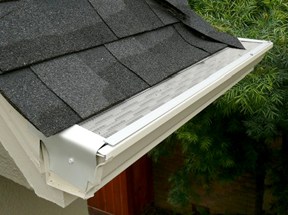
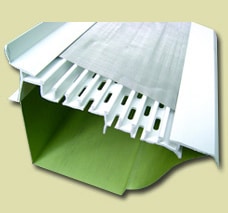
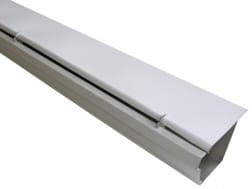
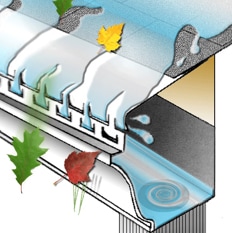
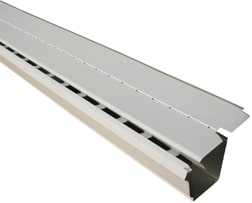
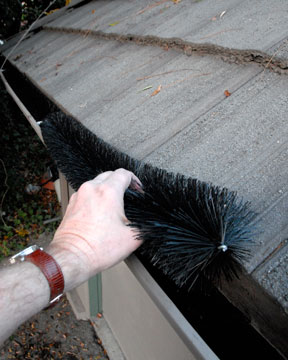
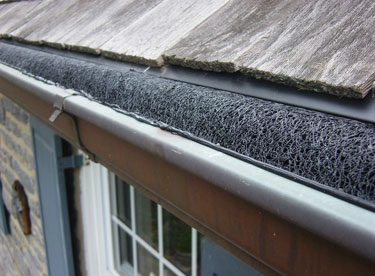
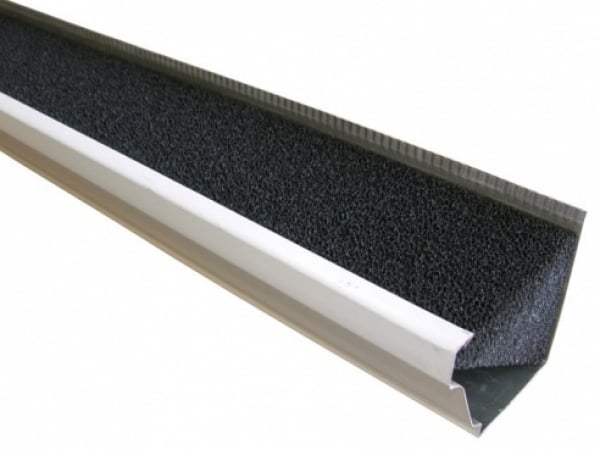
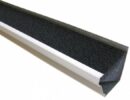
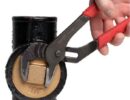


 Don Vandervort writes or edits every article at HomeTips. Don has:
Don Vandervort writes or edits every article at HomeTips. Don has:
